Company Profile
• World wide supplier of Static Mixers
• Extensive reference installations all over the world
• Established 1983
• HQ – Manchester UK, offices in Germany, USA, Canada.
• More then 40 Distributors / Agents world wide
• Manufacture to ISO 9001 Standards
• Custom design and built equipment
• Supply a wide range of applications
• Suitable for all continuous process industries
• Application / Process based engineering
Why use a Static Mixer?
• Save Money
– Less chemicals
– Less Energy
– No maintenance
– No tanks
– No electrical supply
– No mounting structure
– Short payback
• Achieve process requirements !
What is a Static Mixer?
• A static or motionless mixing device fitted in a pipe or channel with no moving parts.
• Installed in-line in a process stream.
• Fixed mixing elements in the pipe or channel use the kinetic energy of the fluid (liquid, gas or a mixture of the two) to mix by creating radial turbulences.
• Does not require a direct power supply.
• Requires no maintenance.
• Requires no spare parts.
Where are static mixers used?
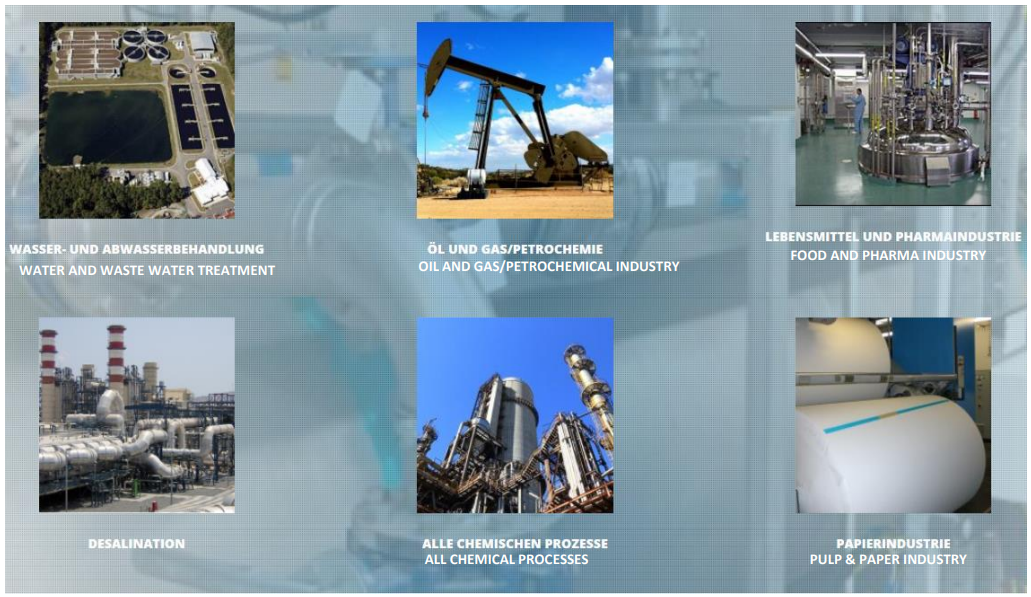
Mixing Effects
Single Leading Edge
Static Mixers divide the flow stream and create radial turbulences for mixing of fluids.
Statiflo mixers are designed to reach fully homogeneity at the mixers discharge.
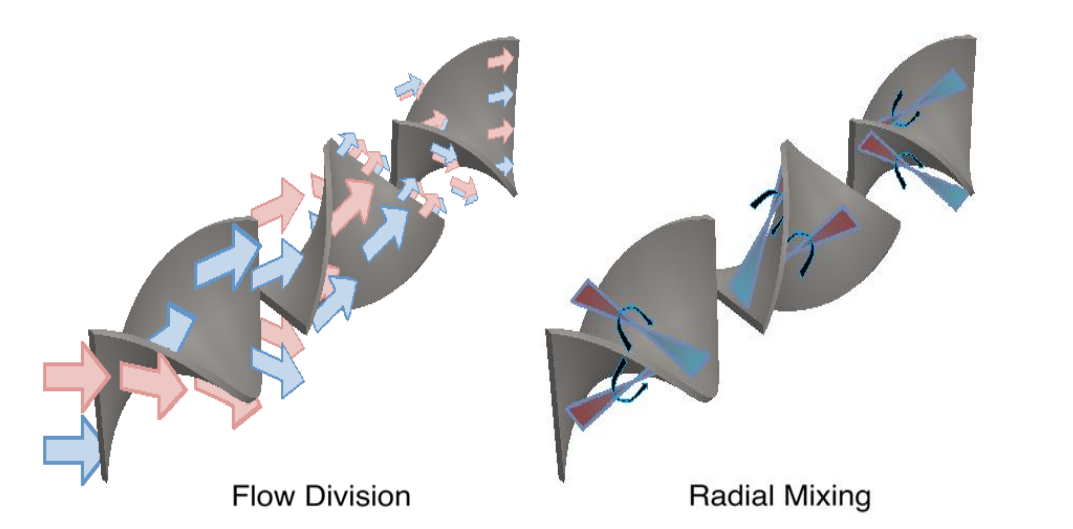
Unique Design
Dual Leading Edge
The Statiflo STM Mixing Element Design is the most efficient mixing element in the market archiving highest mixing quality at lowest pressure drop and installation length (proven by 3rd party testing).
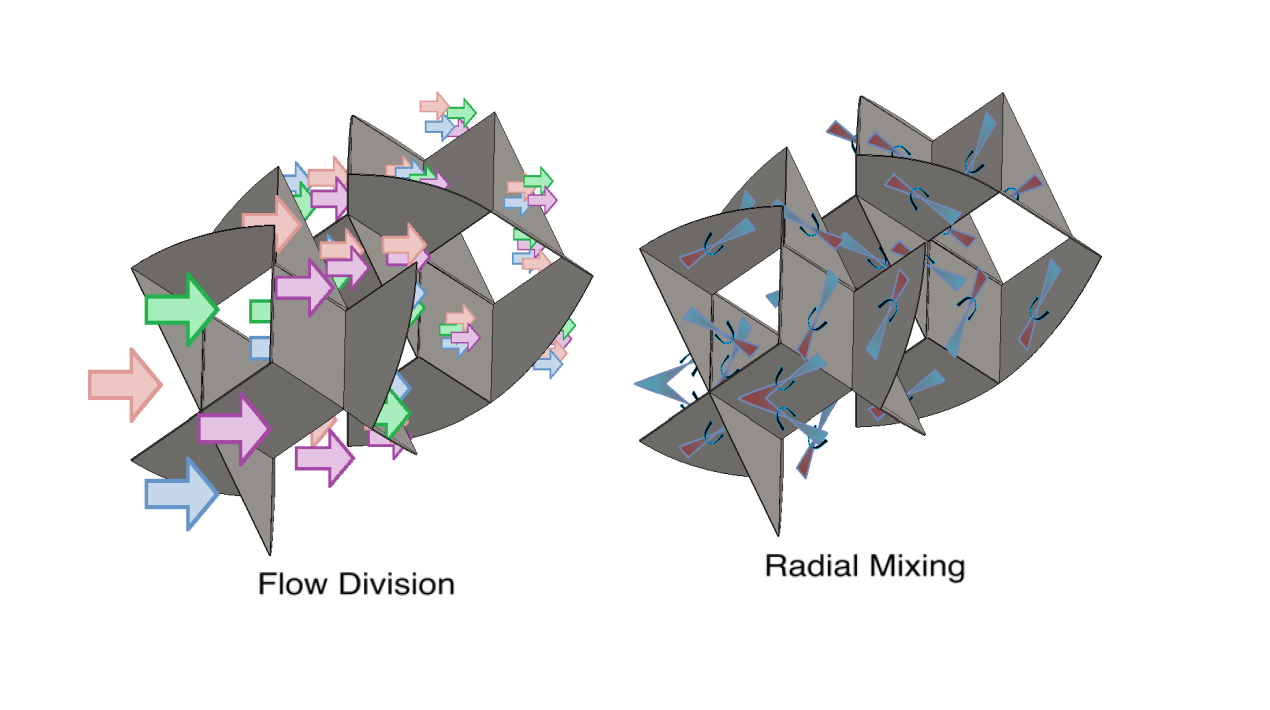
Static mixers for municipal waste water and sludge treatment applications
Flocculation / Coagulation:
Sludge dewatering – phosphate elimination
4th cleaning stage:
trace substance removal with PAC and OZONE
Phosphate Elimination
Generally the Phosphate Elimination is based on physico-chemical and biological treatment. The physico-chemical phosphate elimination are characterised by the following procedure:
– Dosing & complete mixing of the P-removal agent in the wastewater stream,
– Formation of insoluble liaison of the dosed chemicals with the phosphate,
– Flocculation, formation of good removable flocs.
Suspended Sediments and Coloide are included to the flocs,
– Separation of the flocs from the wastewater.
It should be considered that increasing the dosing rate can influence other biological processes like the Nitrification negatively and increase the operation cost of the plant.
Increase in precipitant efficiency – reduction in precipitant consumption
To improve the phosphate removal, the process should be improved by chosing the best dosing point and quick and homogenious mixing of the chemicals with high mixing energy and unified shearing rates.
To use static mixers for a fast and homgenious mixing will improve the process and reduce the phophate levels and the dosing rates significantly !
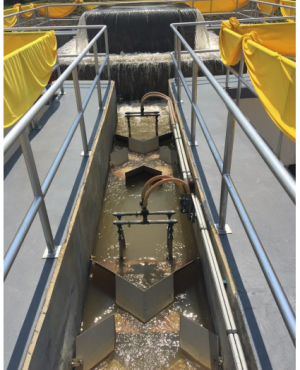
Case Study – Coagulation
Statiflo Channel Mixers
Pure mixing by relying on natural turbulence alone
to mix the coagulant
• Poor chemical dosing
arrangement
• Chemical overdosing
• Limited floc growth
• Expensive operation
• Pure phosphate elimination
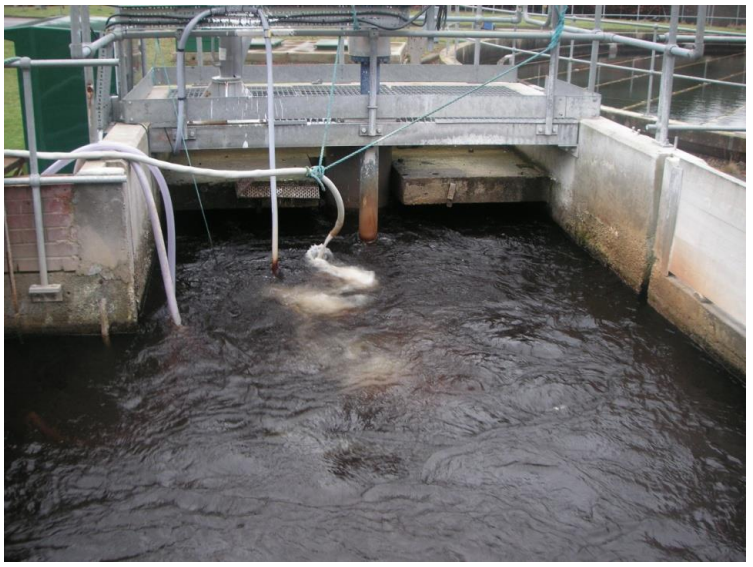
• Significant chemical savings
• No additional civil work
• Small footprint
• Low operating /capital cost
• Non-Ragging Design for flows with a high content of rags
• Efficient design – Control vane(s) can be tuned to optimise mixing performance within headloss constraints
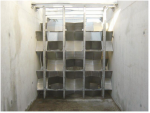
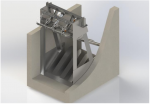
Case Study – Coagulation
• Customer reported ~20% reduction in the chemical dose rate
• Total plant flow of 150 MLD
• Chemical saving of ~£30,000 / year
• Less than 6 month payback on investment
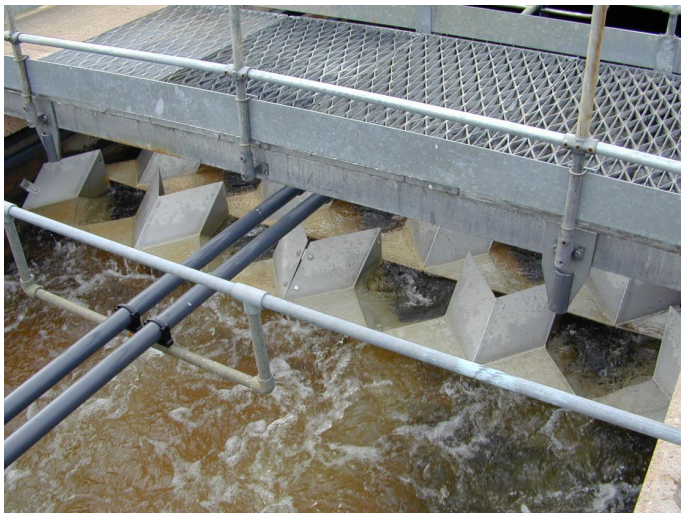
The Problem
This is what you would normally expect from a static mixer when mixing sludge or influent with high fibre content
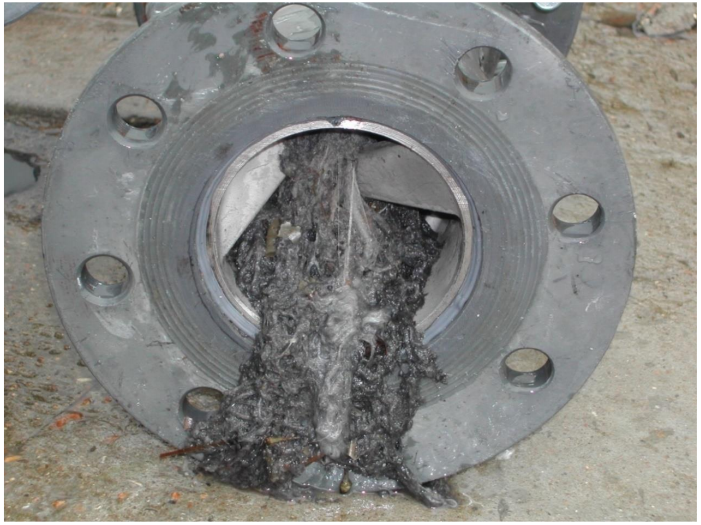
NR MIXER
The open element design allows for free draining and easy cleaning of the Statiflo NR mixer
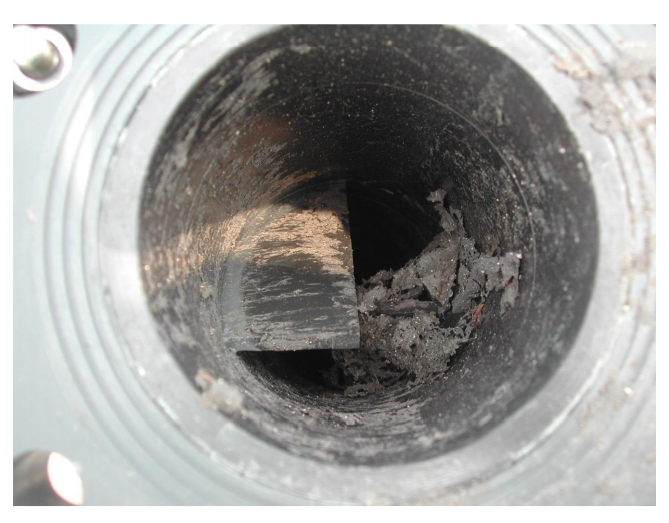
Blockage free static mixers for waste water and sludge treatment
The Statiflo Non Ragging Mixer is the only Static Mixer designed specifically for sludge and fibrous applications.
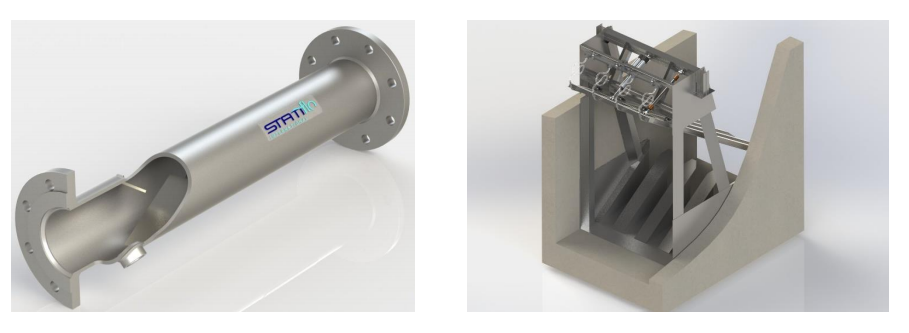
Mixer Trials – Comparisons
• Orifice plate
• Mixing Valve
• Static Mixer from a well known competitor
• Statiflo Sludge Mixer (NR Mixer)
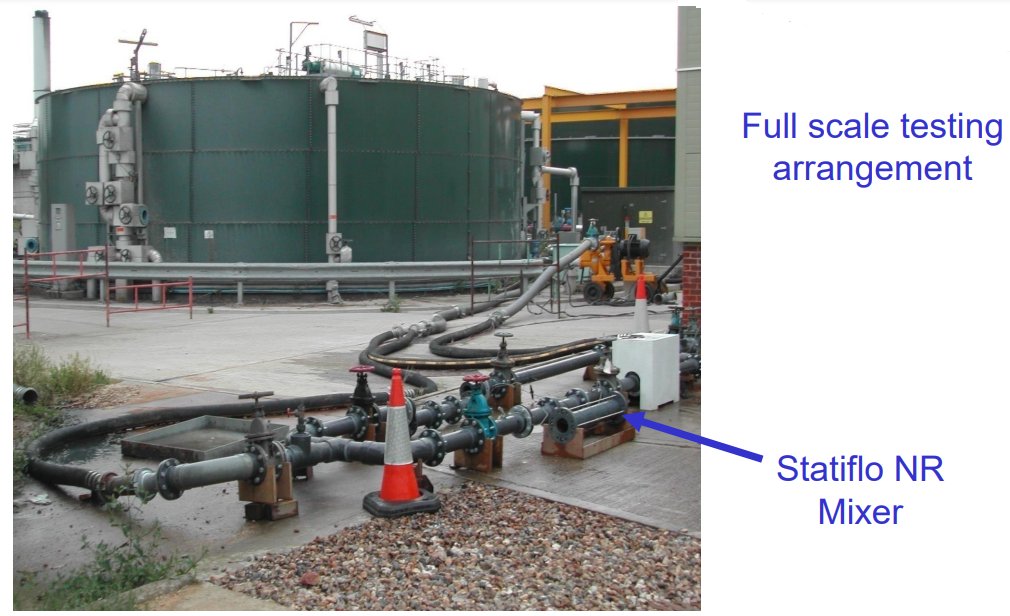
NR Mixer PERFORMANCE
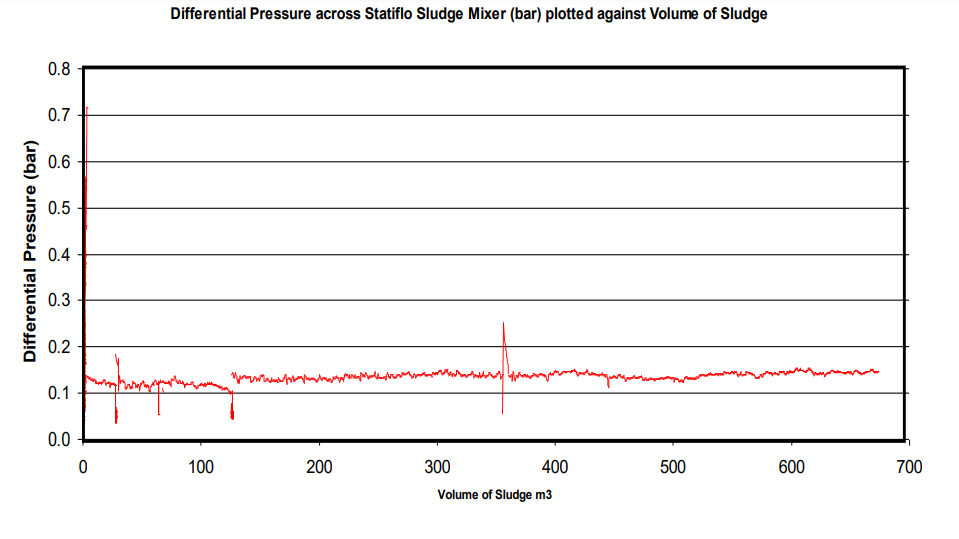
Comparisons

Brand New Mixer Design
• Non blocking
• High mixing performance
• Low pressure drop
• Free draining
• Easy to clean
• Manufactured in steel, stainless steel & uPVC
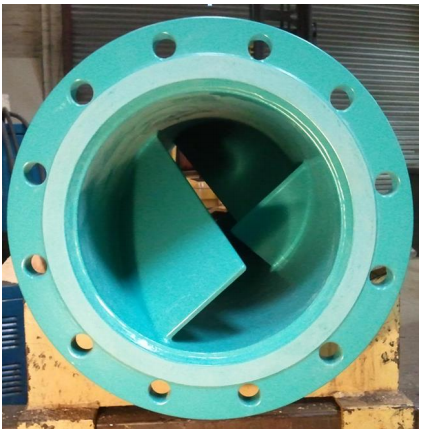
Go Green!
Water & Waste Water Treatment still use a large amount of in-line Dynamic Mixers.
Static Mixers achieve the same or even better process requirements but with:
• No maintenance
• No direct power consumption
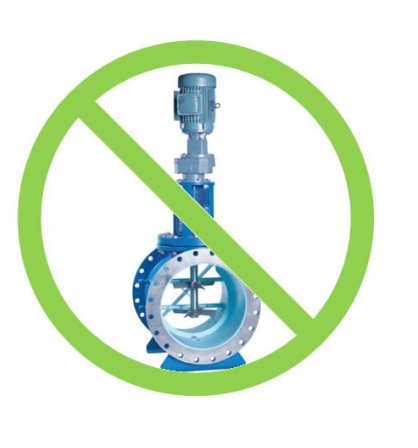
Good Reason to develop a non ragging channel mixer
Pure Dosing System
No mixing
No control
Excessive chemicals
Good Mixing is very important
Too much: Excessive sludge
Poor sludge
Poor sedimentation tank performance
Residual iron in effluent
Staining
Waste of Chemical – Ferric is expensive
Too Little: Phosphorus not removed efficiently
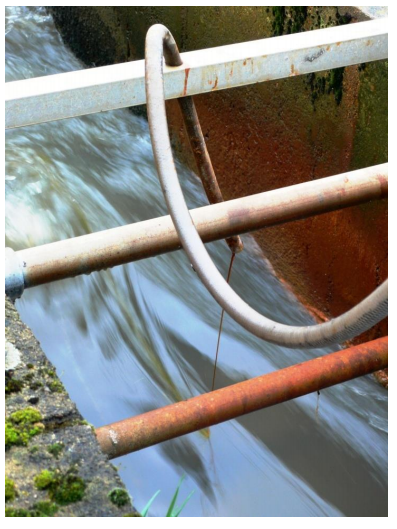
NR-C Open Channel Mixer
NR-C Mixer
Variable mixing panels for angle setting adjustment to respect the plants hydraulic limits at highly variing flow rates (manually or automatically via sensors)
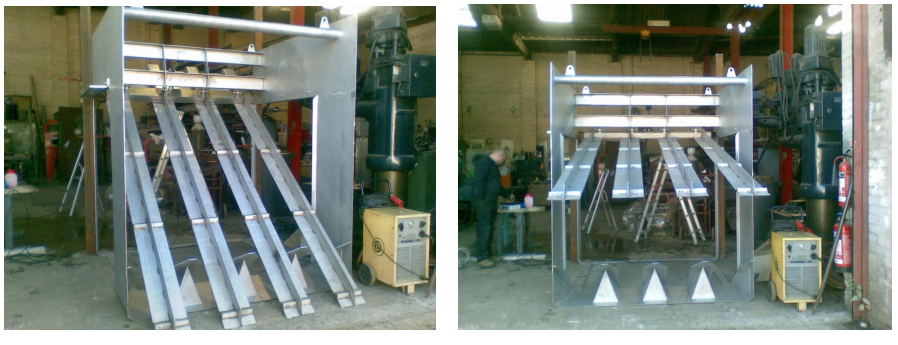
Direct dosing in the turbulences created by the mixer
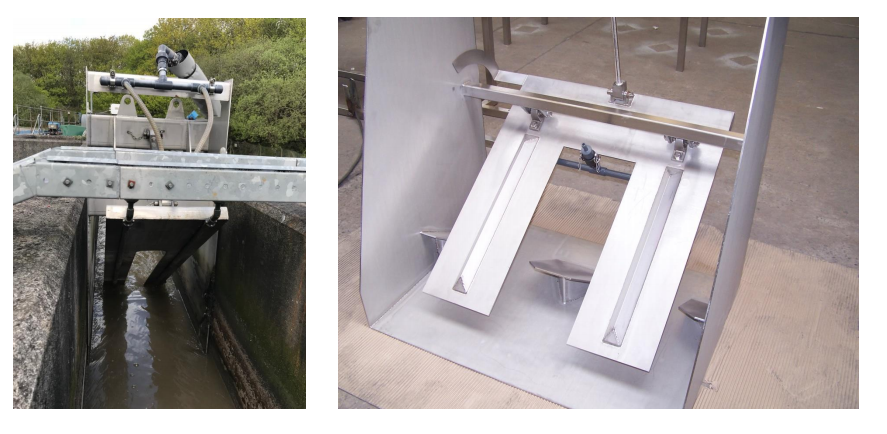
NRC – Non-Ragging Channel Mixer
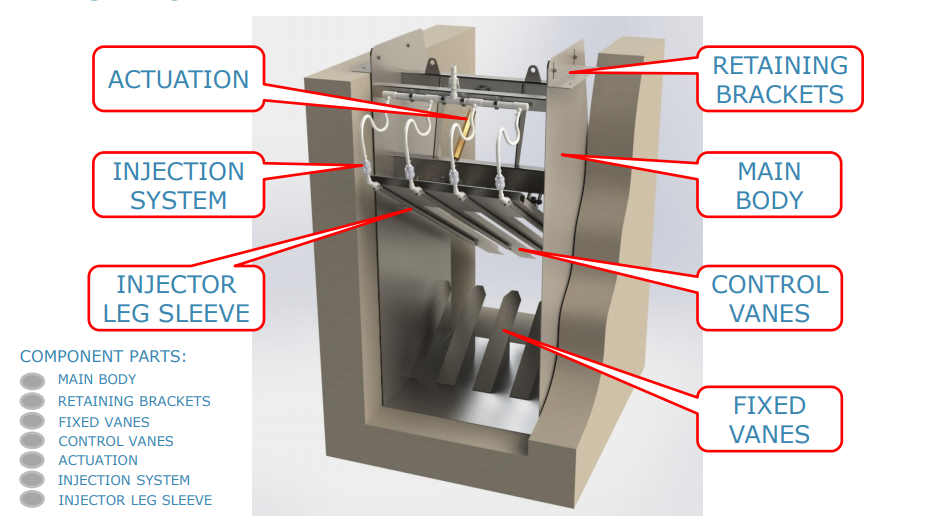
Summary
• Non Ragging channel mixer with manually and automatic adjustable head loss and optimized injection system
• Providing a CoV of 0.05 3-5 d downstream
• Fully mixed in a matter of seconds
• Low shear mixing action
• Increased floc growth
• No civil work required, suits into existing waste water channels

